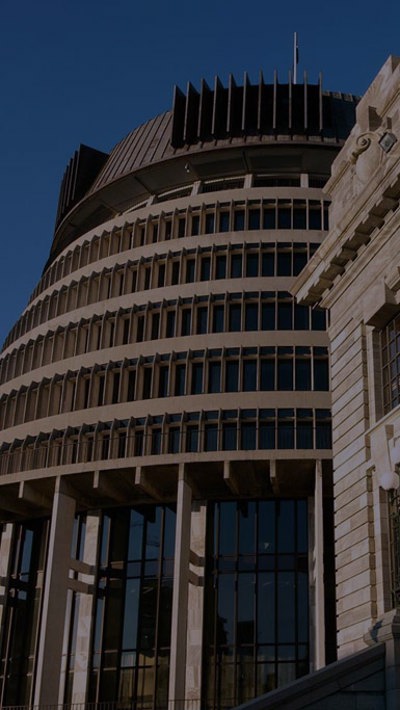Speak to our experts
Contents
As summer and the holiday buzz begin to fade, we look ahead to what 2022 may hold for the finance sector.
Interest rates and inflation on the rise after an historically long period of stability, a pandemic which is tearing its way through the Greek alphabet, Russia’s shocking invasion of the Ukraine, the increasing urgency around climate change and a high intensity law reform programme will make for tough terrain – suitable for goats and Jeeps but otherwise requiring care, cleverness, courage and tenacity. But, as always, there are opportunities among the challenges.
Credit Contracts and Consumer Finance Act (CCCFA)
As you will be aware, Commerce and Consumer Affairs Minister David Clark today announced four changes to address the unintended consequences created by the new lending standards, which came into force on 1 December 2021 and were supposed to ensure that the product provided to the consumer was “suitable and affordable”.
Instead, the increased and highly prescriptive compliance burden on lenders required them to abandon traditional credit assessment tools in favour of specified affordability assessments. This has led to a decline in the number of applications granted and a slowdown in the lending process, as foreshadowed in our Brief Counsel published 11 April 2019.
The Minister initially referred the issue to the Council of Financial Regulators (the Reserve Bank, Treasury, the Financial Markets Authority (FMA), the Ministry of Business, Innovation and Employment (MBIE), and the Commerce Commission), which is expected to report back in April.
But he clearly decided more urgent intervention was needed. The amendments, which Clark described in his press statement as “practical” and “comfortably within the intention of the Act”, will:
- clarify that when borrowers provide a detailed breakdown of future living expenses, there is no need to inquire into current living expenses from recent bank transactions
- remove regular ‘savings’ and ‘investments’ as examples of outgoings that lenders need to inquire into
- clarify that the requirement to obtain information in ‘sufficient detail’ only relates to information provided by borrowers directly (rather than from bank transaction records), and
- provide alternative guidance and examples for when it is ‘obvious’ that a loan is affordable.
Clark stressed that this was “not the final word” and that further changes to credit law and to the Responsible Lending Code would be considered as part of the Council’s remaining investigations.
Sustainable finance
We are expecting another big year for sustainable finance after issuances of around $1.8b last year. The Government has already announced its green bond programme, the major banks all have active sustainability teams, and a number of corporates are also showing a strong interest in the area.
We expect the focus to be on sustainability-linked loans and tailored green and sustainable products with clear science-based targets at the bigger end of town, and a more commoditised product for SMEs.
Late last year, Christchurch City Council Holdings Limited made the first sustainability bond offer in the New Zealand market, in reliance on a specific exemption from the FMA. This opens a path for issuers of conventional listed bonds to issue a sustainability bond under a terms sheet, without needing to have on book the significant eligible assets required to ‘retrospectively green’ an existing conventional bond.

Bond market
The year got off to a busy start with large offshore issuers entering the Kauri bond market, New Zealand issuers targeting offshore investors, and some early domestic corporate issuances.
Volatility following the Ukraine invasion and domestic interest rate rises have slowed some areas of activity (especially involving large offshore participation), but indications so far are that domestic demand is continuing at pace, particularly for unrated and BBB issuers.
We are seeing more companies looking at diversification of debt and continuing debt restructures that started with the emergence of COVID.
There has been no New Zealand securitisation issuance this year to date after a bumper 2021, but there have been a series of Australian issuances (including several topping AU$1b) – demonstrating that these markets are alive and kicking.
Bank regulation
Increased bank regulation has been a consistent theme over the last several years and the pace of change is only increasing.
- The Financial Markets (Conduct of Institutions) Amendment Bill (CoFI) is expected to be passed in July. It will require businesses to apply for a new conduct licence from the FMA, limit the payment of incentives-based commissions, and set out what is required for the conduct of intermediaries.
- Lenders will need to bring their lending contracts into compliance with the Fair Trading Amendment Act (from August 2022), which extends the standard form consumer contracts unfair terms protections in the FTA to certain standard form business contracts, and introduces a prohibition against unconscionable conduct relating to the supply of services.
- And an exposure draft of the proposed new Deposit Takers Act has been released for consultation with enactment targeted for 2023, the depositor compensation scheme scheduled for implementation in 2024 and the licensing system expected in 2025 or 2026. The scope of the project is daunting – the draft Bill dwarfs the existing Act but is little more than a framework with much of the detail still to come.

Even more reforms (such as statutory bail-in and the executive accountability regime) have been flagged for a later round.
Given the intentional overlap between the new Deposit Takers Act and many other pieces of legislation (including the CoFI amendments and the CCCFA changes (described above) a clear landscape is yet to emerge, and lenders will need to start focusing significant resource to prepare for an as yet vaguely defined regulatory environment.

Community/impact investment
There is increased appetite from institutional investors to reach beyond environmental products and fund more social programmes as they seek to extend their ESG portfolio. This has combined with increased stakeholder activism across the board and a push to identify investments that provide clear, specific non-financial benefits to New Zealand communities.
We expect to see significant warehouse and bond programmes in the social housing, education and green sectors this year.
Increase in property finance distress
Property development has provided a lot of business over the last few years, particularly for non-bank lenders as banks have pulled back. But rising construction costs, COVID-induced delays, and difficulties in supply chains are expected to cause some of the less capitalised firms to struggle.
We are already seeing an increase in defaults and demands and expect this will lead to an increase in mortgagee sales over time.
Lenders are paying closer attention to who the contractor is and whether they have the track record to perform the contract. Developers are looking at pre-purchasing materials and storing them off site to limit the supply chain challenges. Lenders will need to ensure that these arrangements are adequately secured.

Increase in small business liquidations
Two years of COVID restrictions and challenging trading conditions are taking their toll on small business, particularly in the hospitality, tourism and retail sectors. As Omicron keeps people at home, we expect an increase in liquidations as struggling businesses run out of equity and banks are no longer able to provide support.
The Government continues to provide a range of grant and loan options for small businesses affected by COVID, but often that isn’t enough for survival.
Another strong year of M&A
2021 was a significant year for M&A activity with PwC reporting a record 107 deals in the December quarter. We expect 2022 to be strong also.
Sponsors are continuing to look for acquisition opportunities and there is a large amount of capital available. Internationally, activity is also solid, prompting international buyers to look at other markets, including New Zealand.
Travel restrictions have dampened that a bit, but as borders re-open we expect to see more investors coming to New Zealand.

























































































































